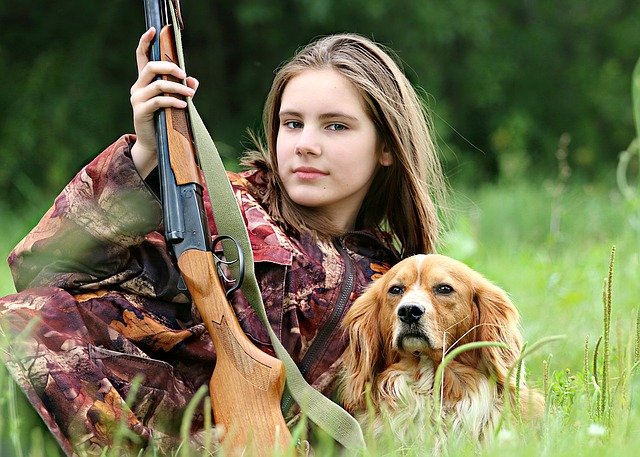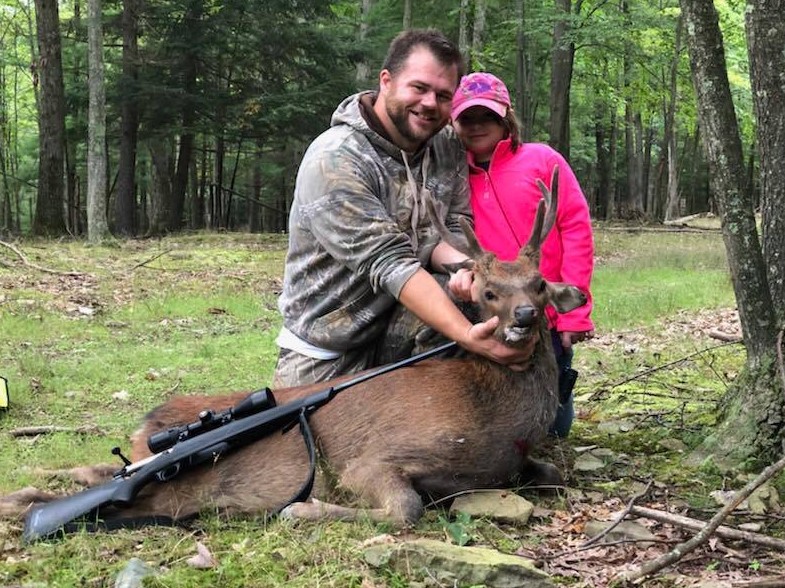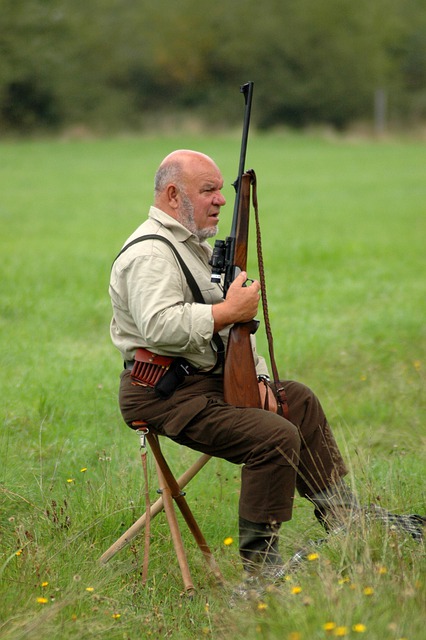
The rules of fair chase have three major goals. They aim to enhance hunter experience, eliminate unfair hunting, and eradicate commercial hunting. Additionally, the rules address important issues such animal cruelty prevention as well as sustainable hunting. This article discusses the ways in which fair chase rules can be used as a tool to help achieve these goals. The following sections will help you learn more:
Hunting has no unfair advantage
The idea of a fair chase has been around for a long time. It is the concept of hunting that requires no unfair advantage for hunters over other hunters. Educating new hunters on fair chase has created a community of hunter-conservationists who are passionate about the outdoors, the importance of protecting wildlife, and ethical harvesting methods. There are a number of things you can do to promote a fair chase culture.
First, you should remember that there are hunting regulations. Some states have passed laws that require hunters to follow these laws. Fair chase laws were formulated to protect wildlife, not to make it easier for hunters. While some illegal hunting techniques may be considered unethical, the majority of hunters adhere to these laws. That way, the public is assured that hunting is still legal and ethical. It is also more likely that there are fewer conflicts.

Enhances hunter's experience of relationship between predator and prey
Fair Chase's Tenets are designed to maximize the interaction of the hunter with the predator. This is perhaps the most fundamental relationship between humans, their environment and animals. These tenets have been summarized in Fair Chase's Essay and Position Statement. The Essay will explain how Fair Chase helps hunter to experience this type of relationship.
Promotes sustainable hunting
The conservation of wildlife is dependent on responsible hunting. Responsible hunting allows game managers the ability to keep animal populations sustainable and socially acceptable. Hunting taxes are also a crucial source of funding for wildlife management. As a solution to North America's wildlife and environmental crisis, Fair Chase was created. It was developed to promote sustainable hunting, while ensuring the conservation of wildlife species. Hunting has many ethical implications, and fair chase promotes responsible hunting. Fair chase is vital to preserve the historical link between conservation and hunting.
Funding from hunters goes to active forest management projects, which improve wildlife habitat and help prevent forest fires. In fact, RMEF allocated $1 million for 20 wildfire rehabilitation projects over the next few year. Contributing to scientific wildlife conservation is another benefit of hunting. In 2021, the RMEF is planning to spend $670,000 on elk research. The organization is on track for another $11.8 million in conservation funding by leveraging the funding from several partners.
Commercial hunting is eliminated
Among the many issues raised by the fair chase debate, Oregon is grappling with the use of high-tech bows and drones to pursue game. Hunters are also using rifles that have telescopic scopes and rangefinders. This is a big change from primitive bows. Finley also plans to include Oregon in the list of states that ban predator killing derbies. Finley reached out to experts who have spent decades hunting food for their support. Jim Posewitz (a member of Montana Outdoor Hall of Fame) and founder of Orion–The Hunter's Institute wrote Beyond Fair Chase. His book, Beyond Fair Chase, is widely available and discusses the North American Model as well as its values.

The boone & crockett Club, North America's oldest hunter conservation club, has published an essay in support for fair chase. In the middle of an environmental crisis, fair chase's honor code was created. The bison bones were bleached by President Theodore Roosevelt. Fair chase advocates must uphold the ethical basis of hunting today and avoid encouraging self-serving misrepresentation from opponents.
FAQ
I don't know where to get a gun. What gun do I need?
For certain species of hunting, you will need a gun.
Hunting licenses are required in most states. The type of firearm you need depends on the game that you hunt and where you reside.
Any sporting goods store can sell you a rifle and shotgun, handgun, pistol, muzzleloader, crossbow or archery weapon.
It is important to choose a weapon which suits your needs. A.22 caliber pistol is a good option if you're looking for small game hunting such as squirrels and rabbits.
A larger caliber weapon might be a good option if you intend to hunt large animals like bears, elk, or deer.
Do not buy a weapon unless you feel comfortable handling it. Guns are dangerous tools. Never load it until you are ready.
Check that the gun has been properly inspected before you purchase it. Ask the seller to show you how to load or unload the weapon.
Be sure to verify the manufacturer's warranty. Ask the dealer if they have a warranty.
Ask the dealer for a duplicate of their safety instructions. These documents should include information about safe storage and maintenance.
Check the serial number. If it starts with "NIB" (or "New In Box"), the gun was made brand new.
If the serial number begins with an odd number, the gun was previously owned.
If you are unsure whether the gun has been used, contact the manufacturer directly. They should be willing to give you details about the gun's history.
Is hunting dangerous?
Yes, it is possible to get hurt while hunting.
There are many ways to injure your self.
One way is through improper shooting techniques. One example is improper shooting techniques.
A second risk is that another animal may attack you.
Every year, hunting accidents occur. Guns cause many deaths and serious injuries.
Hunters are advised to keep their guns loaded until they reach their destination.
You should ensure that your guns are unloaded before you go into the woods.
Always keep an open mind. Be aware of where you step and listen to the sounds around you.
You must be able to defend yourself against any animal that you approach.
Never chase after prey. Instead, just wait patiently for them.
Never make a mistake. They can lead to injury or death.
Be cautious around cliffs and other locations where it is difficult to see below.
Avoid rivers and streams. These places could flood unintentionally.
When hunting, it is important to avoid alcohol consumption. Your judgment is affected and your reaction time is slowed by alcohol.
All safety equipment should be kept close to your body. Always keep a flashlight and a first aid kit close by.
Knowing how to respond to an emergency is crucial. Do not attempt to administer CPR if you don't know how.
Is hunting bears legal in Alaska?
Yes, hunting bears is legal in Alaska. Some hunters use traps and snares to capture bears. Some hunters use traps and snares to capture bears. Others use dogs to locate bears.
The Alaska Board of Game regulates bear hunter. Before hunting in the woods, hunters must have a bear tag.
Bear hunting is popular in some places like Denali National Park and Preserve. Special guided hunts allow tourists to take a bear hunting trip that costs a lot.
What types of guns can be legally used?
There are many different types of weapons you can use while hunting.
Hunting rifles, shotguns and handguns are the most common weapons used by hunters.
Rifles can fire bullets at long distances. Shotguns are often loaded with pellets. Handguns fire bullets through their hands. Muzzle-loading firearms look similar to modern pistols.
Crossbows are used for shooting arrows. Bowhunters are archery weapons.
Special training is required to hunt with a crossbow. First, learn how you can aim and shoot the weapon.
How much does it cost for a hunter to become?
The costs associated with hunting vary depending on the area you live in.
In some areas, you may only need to pay a small membership fee to access public lands.
You may need permits and licenses from some states before you can hunt.
Hunting is expensive depending on the firearm you use. A rifle costs more than a shooting gun.
A license costs between $10 and $50. Depending on the number of days you wish to hunt, you may need to purchase additional tags.
A permit is required to hunt certain species. The size and type of animal you are hunting will impact the cost of your purchase.
You will need to spend up to $150 to hunt wild turkeys.
How many deer-hunters are there in the U.S.
Over 20 million deer hunters are estimated to live in the United States. This figure includes both professional and recreational hunters.
Can I bring my dog?
In most states, dogs cannot be hunted together. However, some states have laws allowing this practice. To find out if it is permitted in your state, check with the department of natural resources.
In addition, some hunters do bring their pets along. Some people believe that having a pet around helps them relax when they are hunting. Others believe that a companion helps them avoid getting lost.
However, pets can be a problem. Dogs will chase away animals from their hunter. Wild animals might attack the pet.
Statistics
- Over the past 50 years, the number of hunting licenses in California has been on a rapid decline, falling 70% from more than 760,000 in the 1970s to under 268,000 in 2020—even as the state's population has skyrocketed, according to The Mercury News. (stacker.com)
- Licenses dropped from a peak of roughly 17 million in the 1980s to 15 million in 2019, according to The Seattle Times. (stacker.com)
- - Percent of residents with paid hunting licenses: 0.7%- (stacker.com)
- Indiana, for example, saw a 28% jump in turkey license sales during the first week of the season. (stacker.com)
External Links
How To
How to hunt wild turkeys
Wild Turkeys are birds found in North America. They are most prevalent in Texas, Oklahoma. New Mexico, Arizona. Colorado. Utah. California. Nevada. Idaho. Wyoming. South Dakota. Montana. Wild Turkeys eat insects, grasses and seeds. In certain regions, wild turkeys eat berries or acorns as well as fruit from trees. Their diet helps them to stay strong and healthy. The feathers of wild turkeys can be used to make hats and clothes. Their breast meat is used to make a delicious meal.
If you adhere to these guidelines, hunting wild turkeys can be safe. Wear long pants and close-toe shoes. Do not wear perfume or cologne because it attracts predators. If you see a predator, do not run away. Instead, slowly walk toward your vehicle. Stay calm and quiet when you approach a bird. It might take several tries before you get close enough to shoot. When you shoot at a wild turkey, use a shotgun loaded with 00 buckshot. Only shoot one shot at once.
If your gun jams try again later. Avoid being hit by flying pellets and duck behind a car or tree. If you're lucky, a hunter might come along to help you clean up.